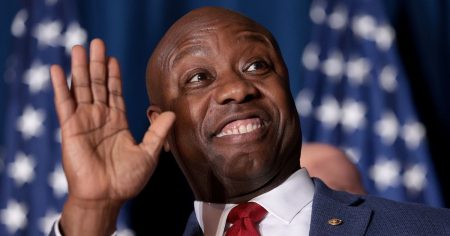The U.S. Census Bureau recently released data showing that only one state, New Mexico, saw a drop in its foreign-born population over a 10-year period. This trend stands out amidst the recent rises in migrant arrivals at the U.S.-Mexico border, highlighting the unique situation in New Mexico compared to other states that have seen an increase in foreign-born residents. Democrats in Congress have advocated for humanitarian-focused approaches to immigration, while Republicans have emphasized stronger border protection policies, showcasing the lack of common ground on the issue.
The U.S. Census Bureau defines “foreign-born” as individuals who were not U.S. citizens at birth, including various categories such as lawful permanent residents, temporary migrants, humanitarian migrants, and unauthorized migrants. In New Mexico, foreign-born residents make up 9.2 percent of the population, which is below the national average of 13.7 percent. Christopher A. Erickson, the director of New Mexico State University’s Center for Border Economic Development, cited the state’s low-income status and slow job growth as factors contributing to the decrease in foreign-born population. New Mexico’s per capita disposable income ranks 44th in the nation, and immigrants make up a significant portion of the state’s labor force.
Despite the economic challenges facing New Mexico, there is potential for change in migration trends based on the concept of deglobalization. This trend emphasizes local solutions and border controls over global institutions and free movement. Erickson suggests that New Mexico, as a border state, could benefit from deglobalization by leveraging its proximity to Mexico for regional trade and diversifying the local economy. Governor Michelle Lujan Grisham has made attracting foreign business investment a priority, with companies like the Taiwan-based Hota Group and German antenna manufacturer mtex already investing in the state.
New Mexico’s economic landscape is poised for growth, with opportunities created by the trends of deglobalization, near-shoring, and reshoring. These shifts could lead to increased job opportunities and economic stability in the state, especially in the southern region. Governor Lujan Grisham’s efforts to attract foreign investment to New Mexico align with these potential growth opportunities, as evidenced by her visits to Australia and engagement with manufacturing companies interested in expanding their operations in the state. The anticipated outcomes include higher-paying jobs, economic stability, and greater economic opportunities for the people of New Mexico.
Overall, the situation in New Mexico regarding its foreign-born population decline underscores the complex and multifaceted nature of immigration issues in the United States. While most states have seen an increase in foreign-born residents, New Mexico’s unique economic challenges and potential opportunities for growth highlight the need for comprehensive and localized approaches to address migration trends. Governor Lujan Grisham’s focus on attracting foreign business investment and capitalizing on deglobalization trends exemplify proactive strategies that could shape the state’s migration patterns in the coming years.















